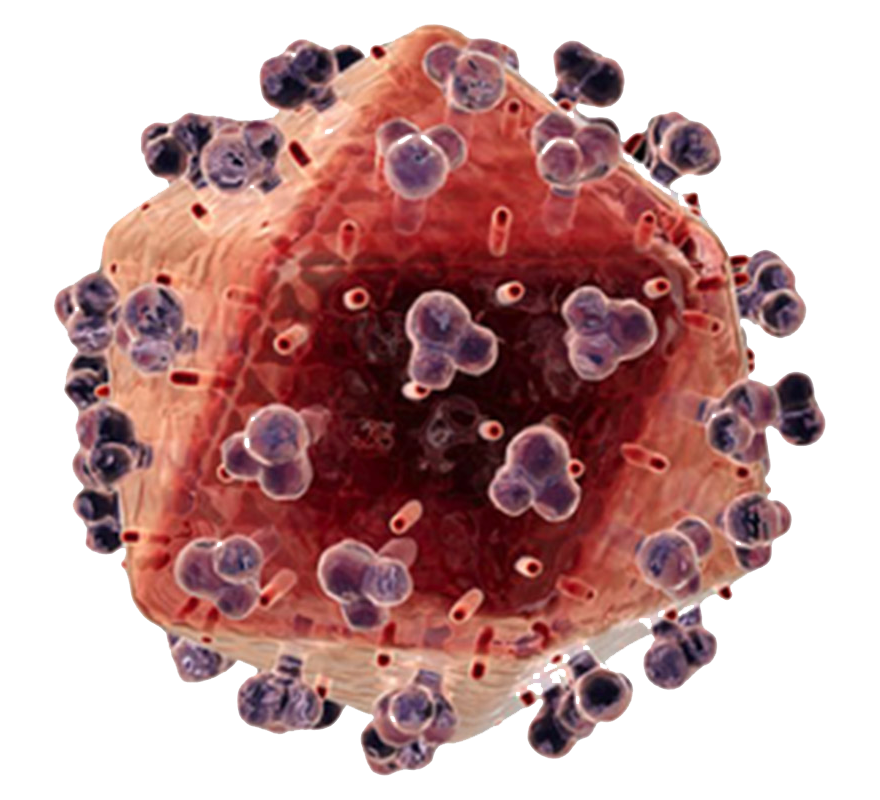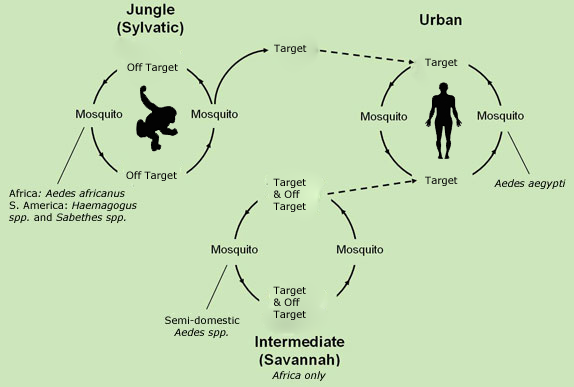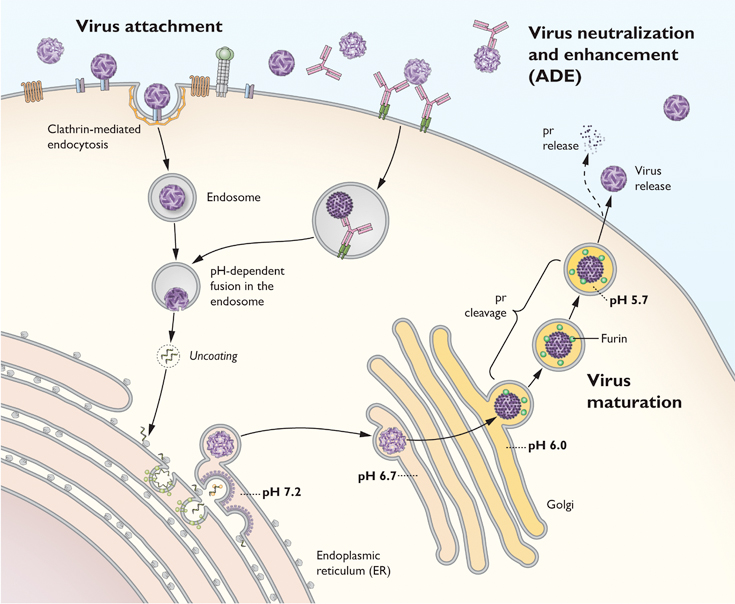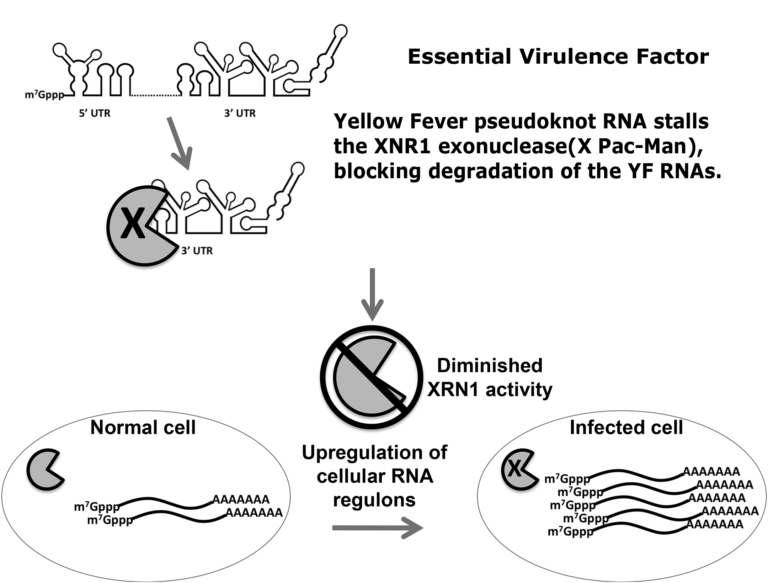Viruses
Intelligent Design Prize in Viruses 1900
Category
The Intelligent Design Prize in Viruses 1900
Yellow Fever Virus
Aedes aegypti mosquito
The Intelligent Design Prize in Viruses 1900


Learn more

Fine-tuning of virus and arthropod
As in any successful joint operation, fine-tuning is evident in both virus and mosquito as they closely coordinate their strategies. The Yellow Fever virus achieves it greatest success in an Urban setting(upper right), aided by the elegantly designed Aedes aegypti mosquito, which injects the virus into the host during a blood meal, then picks up the virus during a subsequent blood meal and transmits it to a new target. The Urban campaigns are intermittent, and the virus would loose operational strength were it not replenished by the Savannah and Sylvatic cycles.
Proliferation
After the outer skin defenses are breached by the proboscis of the Aedes aegypti mosquito, the virus enters a variety of host cells such as monocytes and macrophages.
If the host cell senses the presence of the virus it will ramp up the production of Interferon, a messenger which triggers a barrage of chemical agents. The virus defends itself with a variety of neat hairpin-looped RNAs and proteins that dampen the production of Interferon.

The genome of the virus is a positive strand RNA and can be translated immediately on the host’s ribosomes in the rough endoplasmic reticulum. The resulting proteins include components of viral capsids as well as an RNA dependent RNA polymerase that produces many more copies of the viral genome. Genomic RNA and structural proteins muster into a virions which are then enveloped with host membranes in the Golgi apparatus. Waves of virus can then home in on the high-payoff target: the liver.

Molecule to molecule combat
The Yellow Fever virus is so effective because it has been outfitted with a countermeasure for any hostile threat, and often its deterrence is turned into an offensive weapon.
One such threat is the host’s enzyme XRN1, an exonuclease intent on degrading viral RNA. Defensively, the viral RNA binds back on itself, creating a knotted structure, choking the XNR1. Diminished XRN1 activity in turn creates many copies of subgenomic RNAs, shown to be essential virulence factors. They not only dampen the host’s immune system by shutting down interferon, but are vital to the joint operation with the mosquito. In transporting the virus from one host to another, the mosquito swallows the virus during a blood meal, and the virus must find its way from the gut to the salivary glands of the mosquito. The subgenomic RNAs coordinate this activity.
About the Intelligent Design Prize
The Intelligent Design Prize
The Prize Awarding Committees
Intelligent Design outreach activities
Prizes are awarded to systems that exemplify quality and perfection. Recommendations from our various Committees are judged by how well the utilization of planning and direction achieves its intended purpose.
The Committees, working independently, are tasked with passing the nominees through a rigorous filter that yields designs of specified complexity.
The Intelligent Design movement encompasses a wide range of social, political and cultural endeavors. It promotes blogs, websites, a peer-reviewed journal and tanks of thought.
Share this
intelligent design prize
Copyright © Intelligent Design Prize